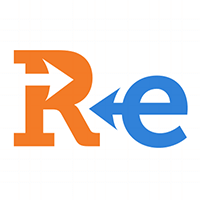How Can We Help You?
Select from the categories on the left, or type into the search bar below to see the answers to your frequently asked questions about TalentClick!
Describe your question to get started:
10. Diversity, Equity, & Inclusion
Adverse impact refers to the selection process as a whole and occurs if members of a protected group (such as race/ethnicity or gender) are disproportionately screened out from the hiring process. If the difference in selection rates is over 20%, then there is evidence for adverse impact. From an assessment perspective, to reduce the risk of adverse impact in the hiring process, tools are tested for any significant differences in how such groups score. With cognitive assessments, in particular, there are significant group differences in how certain racioethnic groups score (due to socioeconomic reasons). Therefore, if cognitive assessments are used as the sole means in a hiring decision and the cut-off scores are stringent, then there is a risk of adverse impact in the hiring process. This is why it is recommended to combine cognitive assessments with other tools and selection methods as well as ensure that the cut-off scores are reasonable for the role.
The cut-off or “”passing”” score is important when assessing the risk of adverse impact for cognitive assessments and this is something that we help clients determine. We have done this multiple times with large organizations for different positions to ensure that there is less than a 20% difference in pass rates. The risk of adverse impact with cognitive assessments also depends on the difficulty of the assessment in addition to the cut-off scores. Since the Cognitive Quotient (CQ) is a basic abilities assessment, there is a lower risk of adverse impact compared to more advanced assessments (such as the Business Reasoning assessment for leaders). Our adverse impact analysis shows that there are no significant group differences on the CQ with the 25th percentile as a cut-off score, and often find on a client-by-client basis that the 50th percentile is an acceptable range.
“Based on extensive research, our assessments meet the standards specified in the Uniform Guidelines of Employee Selection Procedures (UGESP), which addresses adverse impact in pre-hire assessments. Adverse Impact is defined by the UGESP as the ratio between selection rate of any “race, sex, or ethnic group which is less than four-fifths (or eighty percent) of the rate for the group with the highest rate…” If the ratio is equal to or below .80 (i.e. 4/5’s), there is evidence for Adverse Impact.
Our analyses have demonstrated that there are no statistically meaningful group differences between gender or race/ethnicity for our personality/behavioral assessments. There is also no evidence of Adverse Impact from using TalentClick’s personality/behavioral assessments as selection criteria to date, and there have been no claims of unfair employment discrimination that have resulted from an employer’s use of these tools.
Our on-staff experts continually monitor for Adverse Impact by conducting updated analyses of the 4/5’s rule to ensure that we continue to demonstrate no significant group differences for our behavioral products. Note: Cognitive assessments always require extra steps during implementation to establish job relevance and appropriate cut scores to minimize the inherent risk for Adverse Impact.










